Existing User Log In
New User Registration
Register for a free account to gain full access to the VGChartz Network and join our thriving community.



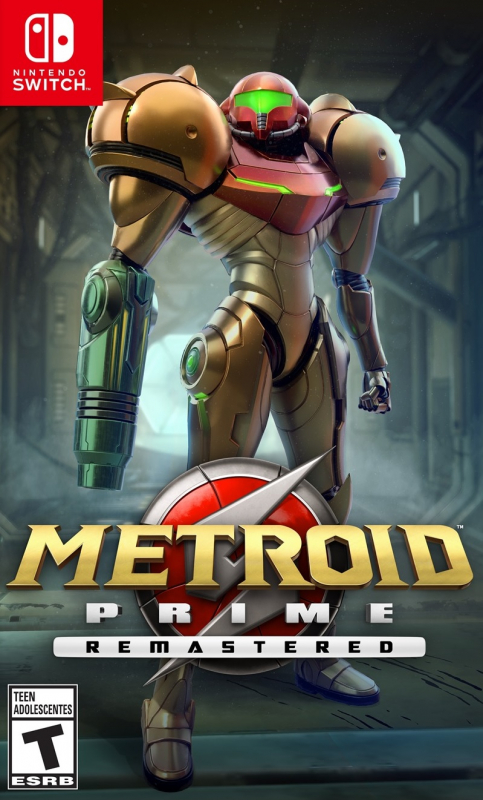

America - Front
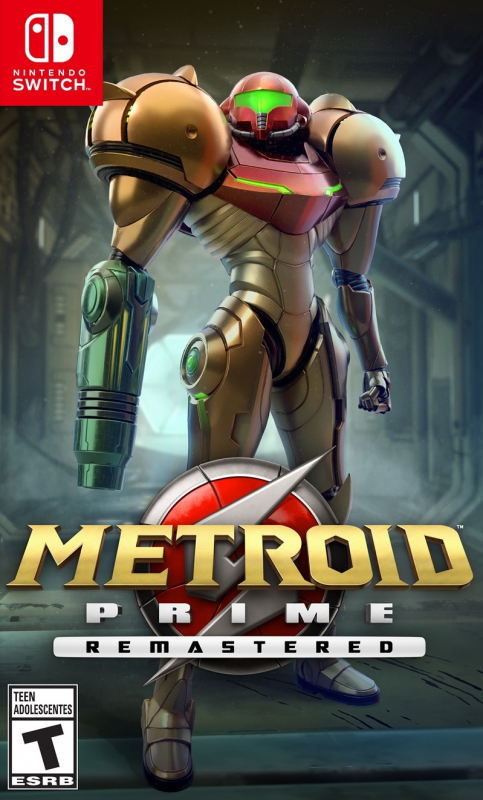

America - Back

There probably isn’t a game on this planet that I know better than Metroid Prime. Being one of the very first titles I played on any console back in elementary school (and the only particularly good one), it wound up being a game I’ve pretty much memorized forwards and backwards. So to call Metroid Prime Remastered a nostalgia trip would be to undersell it, but it raises two interesting questions in its own right: how does Metroid Prime hold up today (particularly for newcomers), and is it worth purchasing again for veterans?
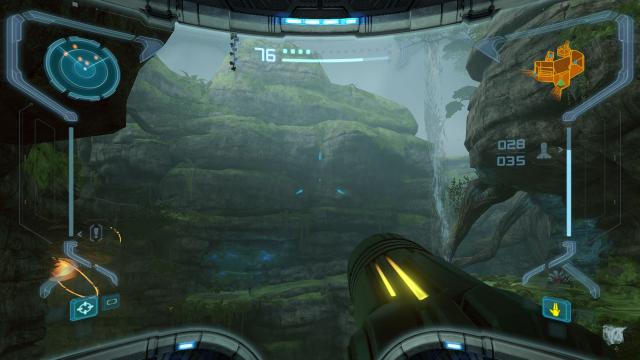
Let’s start with the first question. If you’re not familiar, Metroid Prime features the standard elements of a Metroid title; you start off in a relatively weakened state, explore a lonely alien world, and find items to unlock new areas of the world as you slowly become stronger. What makes the Prime games, and especially the first Prime, unique from other entries is how heavily it plays into themes of mystery and discovery; placing you in the role of Samus, not just as an explorer and fighter, but as a detective.
The plot is relatively simple at the outset. The dastardly Space Pirates have begun outsourcing their experiments to deep space research stations, presumably in order to dodge OSHA regulations. Lack of proper safety protocol results in some bad stuff happening, and Samus, a so-called “freelance” bounty hunter who appears to only work for one organization, responds to a distress beacon from said space station. I won’t write too much more in the way of plot detail beyond that, because Metroid Prime is a game that improves the less you know about it going in.
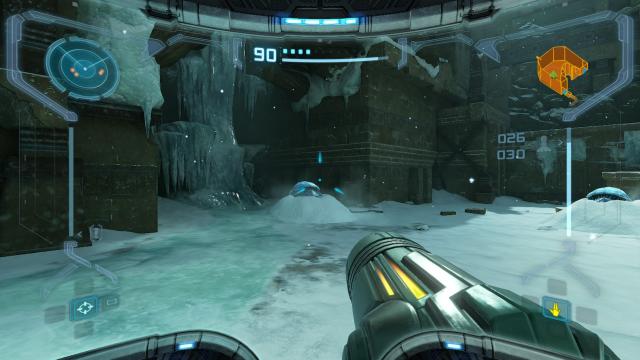
That said, I do want to discuss the way the lore, the plot, and even the world are told, because it’s what sets Prime apart for me from virtually every other exploration-heavy title. Almost all of the information in Prime is conveyed through your HUD, and in particular the Scan Visor, which is a unique little storytelling and worldbuilding mechanic that I would argue has yet to be matched in terms of immersion. The way it works is, at any time, Samus can swap her default view of the world, which allows her to “scan” almost anything and gain information on it. And when I say almost anything, I’m not exaggerating. Every single creature can be scanned, often providing insight into weak points and attack patterns. Most pieces of machinery, text carvings on the walls that describe the history of the planet, ancient architecture, radioactive substances, whatever. If you can think of it, it can probably be scanned.
All of these little clues let the player put the story, and the experience of the world, together. While I don’t dislike the standard video game practice of scattering text or audio logs around for the player to find, the Scan Visor is a dramatically preferable alternative because of just how organic it is. Choosing to pull out your visor and scan something is an active strategic decision being made by the player, rather than the developers just placing a text log on the table and the player either picking it up or not. And the sheer variety of things that can be scanned makes it feel like a real tool that interacts with the environment naturally, rather than just a lore gathering device. Metroid Prime does the best job of any game I’ve experienced of making you an explorer, a scientist, and a detective. You’re here to not only engage in the typical Metroid combat/exploration loop, but to solve a mystery.
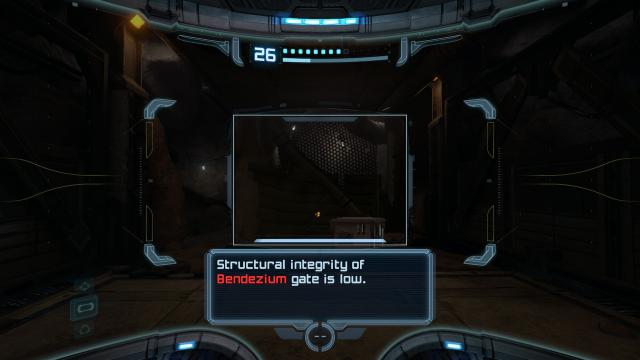
But, of course, this is a Metroid title, and so exploration and combat are as core to the experience as detective work. When Samus isn’t busy discovering the fate of a lost race, she can be found trampling all over their ancient holy grounds and exterminating local wildlife. All of this takes place from a first person perspective and works pretty seamlessly. Despite taking place from a first person perspective and involving shooting, the combat doesn’t really involve aiming that frequently, relying on a hard lock-on system instead to instantly let you hone in on any target. Instead, it’s much more about movement and figuring out how to exploit enemy weaknesses, with the variety of towering bosses often requiring combining multiple power-ups to topple.
Exploration is handled very well too, with environments and level design being a particular highlight. The way the game effortlessly guides you from one destination to the next, criss-crossing all over the planet, is a beautiful masterclass in level design and one developers are still taking notes from 21 years later. Gorgeous visuals and Kenji Yamamoto’s sublime soundtrack complete the experience, making the world of Tallon IV one absolutely worth your time if you’ve never visited it before.
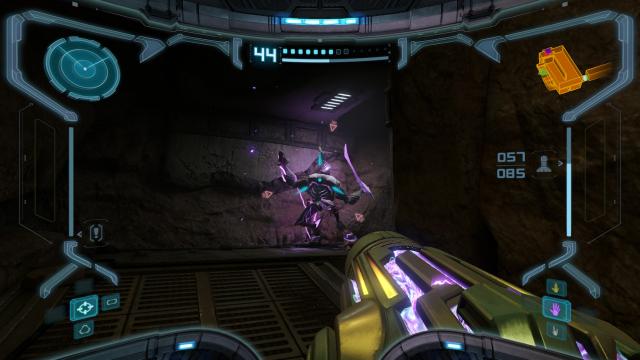
I won’t say much more about Metroid Prime for newcomers, partially because I know my editor is sick to death reading about this game after last year, and partially because, as mentioned up front, I think Prime is a title that generally benefits from the player coming into it without much foreknowledge. Suffice to say, the answer to "Does Prime hold up today?" is a resounding yes. If you have any interest in exploration-based games, and you own a Switch, you should absolutely give it a shot. Just don’t come in expecting a typical FPS purely because Prime takes place from a first person perspective. It is not that. Metroid Prime was a heavy inspiration on titles like Dark Souls and Hollow Knight, so anticipate that type of pacing.
With that out of the way, I’m going to dedicate the rest of this review to people who have played Prime before; either those who played it on an older console and finished it, or those who were turned off and never did. Is it worth playing again today?
Fair warning: there are some very mild spoilers below for the game. I don't think anything mentioned would harm your enjoyment of the game on a first playthrough, but if you want to go in completely blind, now’s the chance to turn away.
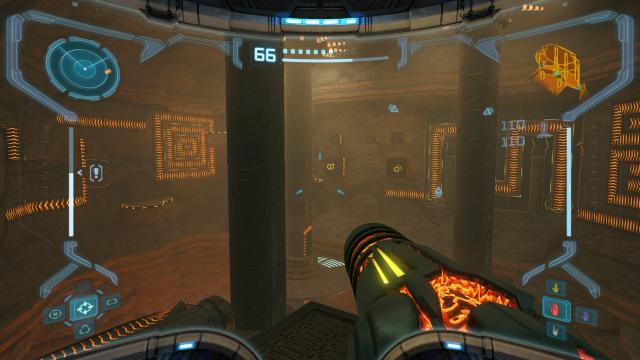
Let’s start with the controls, which are probably a big factor for people who played Metroid Prime on the GameCube and never finished it. The original Prime had a… unique control scheme, to say the least, with one stick handling all movement. While I can’t say I’ve ever had a problem with it, it’s admittedly baked into my memory from having played the game as an eight year old, and I know plenty of people who are more used to a dual-stick system that often find themselves with a lot of adjusting to do.
In a welcome, and very un-Nintendo-like, twist, there's a sizable variety of control options available this time around. When the initial rumor of a Prime re-release on Switch floated around, I was curious how they would design the controls; would they use the original tank controls? Use a motion control scheme similar to the Trilogy release on Wii? A standard dual-stick shooter scheme? The answer seems to be "yes." All of these control schemes are available, and the original/dual-stick schemes are even able to be supplemented by gyro controls a la Splatoon. It is still disappointing that button mapping doesn’t exist beyond a couple of pre-determined swaps, but the most important thing is here, which is that pretty much anyone can find a way to play Prime that makes them happy. If you liked one of the older control schemes, it’s available, and if you didn’t, then there’s a more standard console shooter scheme for you.
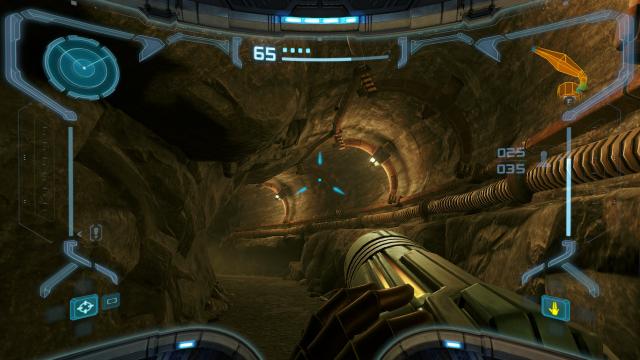
Performance is rock solid as well. The original title (and subsequent re-releases) all ran at 60 FPS, but that did come at a small cost of having to occasionally wait for rooms to load. The improved hardware of the Switch has made that a thing of the past, with every door opening immediately. A game looking this good, and running as well as it does - on the Switch of all things - is genuinely impressive.
And it does look good. The resolution and texture quality is obviously much better, but plenty of assets have been straight up remade, or at least been so significantly improved that they look entirely new. The beams in the arm cannon, for instance, all have completely new effects, so it really looks like you’re channelling the element that you’re using. The little touches that were present in the original game, like rain running down Samus’ cannon realistically or water dripping off her visor as she emerges from a pool, are just as stunning here as they were for the first time in 2002.
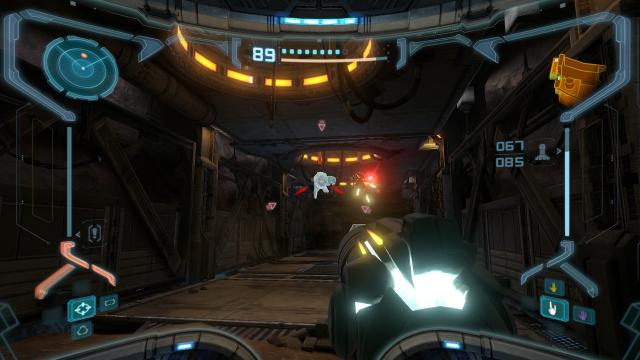
Most enemies have received a significant overhaul as well, and it shows. It’s almost a shame that getting up close is usually a terrible strategy in combat, because I frequently found myself wanting to move in to get an eyeful of the updated models. Some attack and movement animations have been entirely redone as well, one particular highlight being a rather brutal end to a particular late game boss where it’s shown dissolving entirely.
The real stars of the show are the revamped environments, which are absolutely gorgeous. Metroid Prime was one of the best-looking games of the sixth generation, so it’s no surprise that an updated version of Prime looks great today. But the degree of improvement is frankly staggering at points; Phendrana Drifts and Tallon Overworld both deserve special mention for how beautiful they look now. It’s amazing that Retro Studios managed to even get this running on Switch; perhaps it just goes to show that even though the personnel at Retro are almost entirely different from the ones in 2002, their talent for squeezing every ounce out of Nintendo’s hardware is still present.
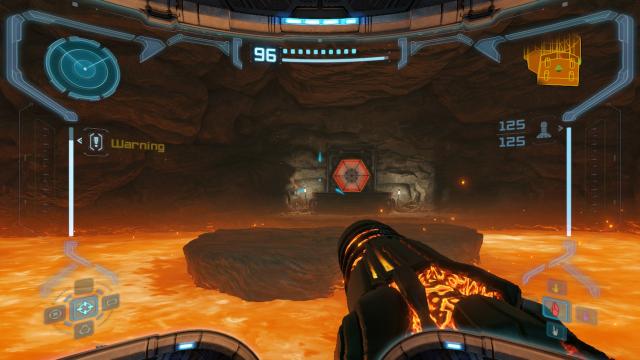
That said, the sheer quality of the visuals is a double-edged sword because it makes the few things that don’t look incredible really stick out. Certain parts of the game look, for lack of a better word, plastic. Samus’ model is probably the worst offender here; it’s hard to pinpoint exactly what’s wrong with it, but I think it's at least partially related to how shiny it is. It looks a bit like an SFM model that got plopped into a different game; the lighting and art style just don’t seem to quite match up with the rest of the world. Admittedly, this is less of a problem in a first person game than it would be in a third person one, but it does hit the ol’ immersion factor when the elevator or save station cut scenes pop up.
And while the lighting as a whole is generally done very well, there are a few other areas where it feels like the (new) team at Retro went overboard with it, somewhat undermining the atmosphere and mood of certain rooms from the original. Some of the once darker rooms in Chozo Ruins are particularly well lit now, which makes them a lot less foreboding than they were in the original release. Mass Effect Trilogy had this issue as well at points, so it might be a trend for remasters, but it is a shame for those of us weighed down by nostalgia.
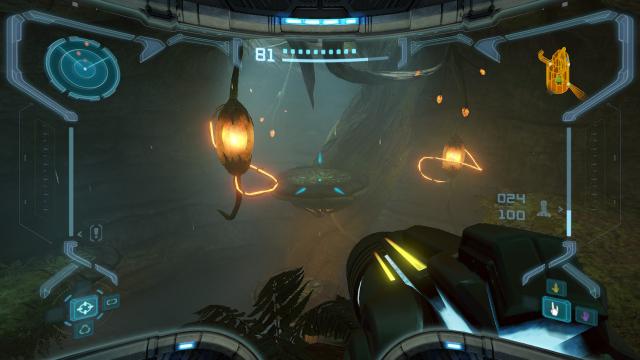
There are a few other quirks, like how sudden the morph ball transformation animation is, and the decision to rub vaseline all over the thermal visor for some reason, but ultimately it’s tough for me to chide the visuals too much, especially given that it was only a year ago that Nintendo tried to charge $60 for an upscaled port of Skyward Sword. On the whole, the visual changes to Prime Remastered are a great improvement, and at $40 it’s such reasonable value that I’m surprised it's coming from Nintendo. Admittedly “good value for a Nintendo remaster” is a very, very low standard, but even compared with other notable 9th gen re-releases and remakes like Dead Space and Demons' Souls, 40 bucks for this level of effort is certainly justifiable.
Metroid Prime Remastered also might be the first Nintendo game with genuine accessibility options, or at least the first I’ve come across. They're not especially extensive - standard colorblind options that other companies have been implementing for a while now, for example - but I’ll praise them if it helps make these sorts of things commonplace across the industry. Such options should be the bare minimum at this point, but hey, progress is progress.
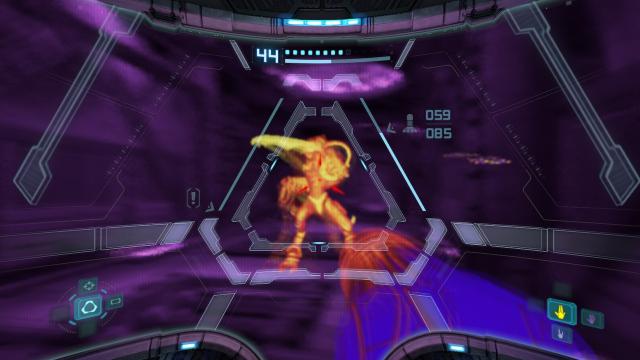
Beyond that, not too much has changed from the Trilogy version. I note the Trilogy version specifically, because Remastered is based on that version, and that is a bit of a shame. After the original GameCube release of Prime in North America, several adjustments were made over the years in future GameCube releases and eventually the Trilogy on Wii. These range from the good (reducing frequency of crashes), to the bad (patching out harmless sequence breaking opportunities), to the mostly annoying (removing the ability to shatter certain frozen enemies and adding some other very annoying enemies to certain locations). On the whole, it’s why I consider the original NTSC GameCube release of Prime to be the best version from a purely gameplay standpoint, and it’s a shame that the Remastered version, with all of its positive changes and options, has no way to open up some of those now-removed sequence break tricks that made Prime more replayable. What’s perhaps more frustrating is that it all contrasts very heavily with 2021’s Metroid Dread, a game jam-packed with sequence breaking opportunities, and whose developers announced that they would never remove them unless it was necessary to keep newcomers from breaking the game unintentionally.
I also wish some of the issues that have remained with the game since the original release had been addressed. After a certain point in the story, a rather annoying enemy type begins to appear all over the Chozo Ruins, which makes traversing them a consistent pain. It would also be nice to have beam-specific doors change to just regular doors after being opened once, instead of forcing you to stop and switch to the beam in question every time. Credit where credit is due, though, the decision to carry over allowing us to use Power Bombs on Beam Troopers is very much appreciated.
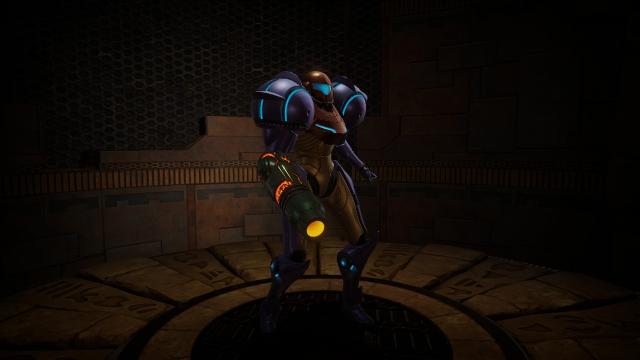
There’s a reasonable argument that it’s unfair to critique a remaster that focuses primarily on visual updates for not addressing gameplay, and in some cases I would agree. Adding back in something like scan dashing from the original GameCube release might require a degree of tinkering with the physics engine that Retro wasn’t prepared to do. But other changes, like removing the artificial Power Bomb barrier to prevent early Plasma, are much easier to implement, and given that this new team at Retro was willing to go even further than the Trilogy version to prevent sequence breaking by removing the stalactites that served as the starting point for the early Plasma trick (even though that trick was already patched out), it seems reasonable to critique this version as somehow being even less sequence break friendly. That seems like a particularly illogical attitude to take for a series like Metroid, which became famous in no small part due to the numerous amount of sequence break and speedrunning opportunities available in Super Metroid.
All of that is to say that if you want a version of Metroid Prime to play casually, then Prime Remastered is here to dazzle you all over again. That first playthrough is just as magical as it was back on the GameCube. The revamped visuals are, for the most part, breathtaking, and the new control schemes allow just about anyone to enjoy the experience. Even without sequence breaking opportunities it’s still an exceptional game. But for someone who has taken the dive onto Tallon IV many times before, however, I can’t help but feel somewhat mixed. It’s certainly the prettiest tour I’ve taken of the planet, but it’s also the most restrictive, and that’s a bummer. Ultimately, I walk away feeling like there’s no real “definitive” version of Metroid Prime to turn to, which is a shame. If I want the best looking version of Prime, Remastered will be my go to, but if I feel like pushing Samus’ capabilities to her limits I have to imagine I’ll still be dusting off my old GameCube, firing up my CRT, and diving back into Tallon IV in 480p all over again.